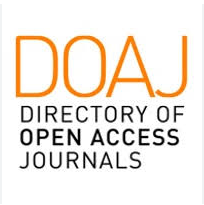The Impacts Of The Great Depression 1929-33 On Hungary’s Economy
Abstract
The Great Depression of 1929-33 had serious consequences on Hungary’s economy. The Central and Eastern European countries, including Hungary were hit severely by the downturn of the wholesale prices as regards of agricultural products in international markets. Besides declining prices another major problem was that the industrialised countries introduced protectionist measures (customs duties and quotas). As a result of this process, market opportunities were constrained and later ceased to exist. The situation was further aggravated by the fact that the unfavourable gap between agrarian and industrial prices further widened in the 1920s.
Although the crisis started to emerge in the agriculture, its effects were extended to the industry as well. Due to the lack of safe markets, heavy industrial branches declined sharply, whereas the volume of output fell modest in the light industry.
The bankruptcy of the Austrian Credit Anstalt on 12th Mai 1931 adversely affected Hungary’s financial system. In order to overcome the difficulties, banking holiday was ordered by the government, which coupled with the suspension of all payments and the introduction of foreign exchange control.
Foreign trade has changed significantly. In 1937, the share of Hungary’s export in Germany’s trade was 42 percent, which increased to more than 50 percent after the Anschluss. Thus, at the end of the 1930s, the Third Reich became the most important trade partner of Hungary.
Thanks to favourable external conditions accompanied by the rearmament programme of Nazi Germany and state intervention, the performance of the Hungarian economy improved, and by 1937 it surpassed the pre-depression level. The Győr Programme, announced on 12th March 1938 with its military and infrastructural development contributed to the economic boom, which had positive impacts both in the heavy and light industrial branches.
References
ALDCROFT, D. H. & MOREWOOD, S. (1995): Coping with Depression in Eastern Europe. In: Aldcroft, D. H. – Morewood, S., ed., 1995. Economic Change in Eastern Europe since 1918. Aldershot, Hants, England: Edward Elgar Publishing Limited. pp. 164-194.
ALDCROFT, D. H. & MOREWOOD, S. (1995): War and the emergence of new regimes. In: Aldcroft, D. H. – Morewood, S., ed., 1995. Economic change in Eastern Europe since 1918. Aldershot, Hants, England: Edward Elgar Publishing Limited. pp. 86-105.
BEREND, I. T. (2006): An Economic History of Twentieth Century Europe. Economic Regimes from Laissez-Faire to Globalization. Cambridge: Cambridge University Press.
BEREND, I. T. (1985) Agriculture. In: Kaser, M. C. – Radice, E. A., ed., 1985. The Economic History of Eastern Europe 1919-1975. Vol. I. Oxford: Clarendon Press. pp. 148-209.
BEREND, I. T. & RÁNKI, Gy. (1977): East Central Europe in the 19th and 20th centuries. Budapest: Akadémiai Kiadó.
BEREND I. T. & RÁNKI, Gy. (1976): Közép- és Kelet-Európa gazdasági fejlődése a 19-20. században (Economic and social development of East Central Europe in the 19th and 20th centuries). Budapest: Közgazdasági és Jogi Könykiadó.
BEREND, I. T. & RÁNKI, Gy. (1987): Polen, Ungarn, Rumänien, Bulgarien und Albanien 1914-1980. In: Armengaud, A. – Wolfram, F. – A. Van Houtte, J. – Kellenbenz, H., – Mieck, I., Vittinghoff, F., 1987. Europäische Wirtschafts- und Sozialgeschichte vom Ersten Weltkrieg bis zur Gegenwart Band 6. Stuttgart: Klett-Cotta. pp. 775-820.
CSIKÓS-NAGY B. (1996): A XX. század magyar gazdaságpolitikája. Tanulságok az ezredforduló küszöbén (Hungarian economic policy of the XXth century. Lessons at the turn of the millennium). Budapest: Akadémiai Kiadó.
DOMONKOS, E. (2018): Az ipari fejlődés sajátosságai a Horthy-korszakban (The pecularities of industrial development in Hungary in the Horthy era). In: Domonkos, E. – Marinovich, E. – Sáringer J. ed. Kelet-Közép-Európa politikai és gazdasági fordulatai a rövid XX. században. A Budapesti Gazdasági Egyetem és a Veritas Történetkutató Intézet közösen szervezett, 2018. április 13-i nemzetközi konferenciájának tanulmánykötete. Budapest: BGE. pp. 112-130.
DOMONKOS, E. (2016): Közép- és Kelet-Európa gazdaságtörténete a két világháború között. A félperiféria és a világgazdasági folyamatoktól való elzárkózás (Economic history of Central and Eastern Europe in the interwar period. Semi periphery and seclusion from world economic tendencies). Budapest: Aposztróf Kiadó.
DRABEK, Z. (1986): Foreign Trade Performance and Policy. In: Kaser, M. C. – Radice, E. A. ed.: The Economic History of Eastern Europe 1919-1975. Vol. I. Oxford: Clarendon Press. pp. 379-467.
DRASKÓCZY, I., BUZA, J., KAPOSI, Z., KÖVÉR, Gy., & HONVÁRI, J. (1998): Magyarország gazdaságtörténete a honfoglalástól a 20. század közepéig. Harmadik részben átdolgozott kiadás (Hungary’s history from the conquest to the middle of the 20th century). Budapest: Aula Kiadó.
GUNST, P. (1974): A mezőgazdasági termelés története Magyarországon 1920–1938 (The history of agricultural output in Hungary between 1920 and 1938). Budapest: Akadémiai Kiadó.
GUNST, P. (1996): Magyarország gazdaságtörténete 1914-1989 (Economic History of Hungary between 1914 and 1989). Budapest: Nemzeti Tankönyvkiadó.
HONVÁRI, J. (2005): Magyarország gazdaságtörténete Trianontól a rendszerváltásig (Economic History of Hungary from Trianon to the change of regime). Budapest: Aula Kiadó.
KAPOSI, Z. (2002): Magyarország gazdaságtörténete 1700-2000 (Economic history of Hungary, 1700-2000). Pécs-Budapest: Dialóg-Campus Kiadó.
LETHBRIDGE, E. (1985): National Income and Product. In: Kaser M. C. – Radice, E. A., ed., 1985. The Economic History of Eastern Europe 1919-1975. Vol. I. Oxford: Clarendon Press. pp. 532-597.
NÉMETH, I. (2002): Németország története (History of Germany). Budapest: Aula Kiadó.
ORMOS, M. (2009): Válságok és megoldások - történész szemmel (Crisis and solutions). In: Rab, V., 2009. Válságos idők tegnap és ma. Pénz, gazdaság és politika a 19-21. században (Times of Crisis yesterday and today. Money, economy and politics in the 19-21st centuries). Pécs: Pro Pannónia Kiadó. pp. 10-19.
PALOTÁS, E. (2003): Kelet-Európa története a 20. század első felében (History of Eastern Europe in the first half of the 20th century). Budapest: Osiris Kiadó.
RÁNKI, Gy. & TOMASZEWSKI, J. (1986): The Role of the State in Industry, Banking and Trade. In: Kaser, M. C. – Radice, E. A., ed., 1986. The Economic History of Eastern Europe 1919-1975. Vol. II. Oxford: Clarendon Press. pp. 3-48.
ROMSICS, I. (2017): A Horthy-korszak (The Horthy era). Budapest: Helikon Kiadó.
ROMSICS, I. (1999): Hungary in the twentieth century. Budapest: Corvina – Osiris.
ROMSICS, I. (2017): Magyarország története (History of Hungary). Budapest: Kossuth Kiadó.
SZÁVAI, F. (2009): A Horthy-korszak gazdasági élete 1920-1945 (The economic life of the Horthy era from 1920 to 1945). In: Gulyás, L., ed., 2009. A modern magyar gazdaság története. Széchenyitől a Széchenyi tervig. (The contemporary economic history of Hungary. From Széchenyi to the Széchenyi plan). Szeged: JATE Press. pp. 113-125.
TEICHOVA, A. (1989): East-central and south-east Europe, 1919-1939. In: Peter, M. – Pollard, S., 1989. The Cambridge Economic History of Europe. Vol VIII. Cambridge: Cambridge University Press. pp. 887-983.
TEICHOVA, A. (1985): Industry. In: Kaser, M. C. – Radice, E. A. ed., 1986. The Economic History of Eastern Europe 1919-1975. Vol. I. Oxford: Clarendon Press. pp. 222-333.
TOMKA, B. (2013) A Social History of Twentieth-Century Europe. First Edition. London: Routledge. Taylor & Francis Group. https://doi.org/10.4324/9780203375358
TÓTH, I. Gy. (2005): A Concise History of Hungary. The History of Hungary from the Early Middle Ages to the Present. Budapest. Corvina – Osiris.


























